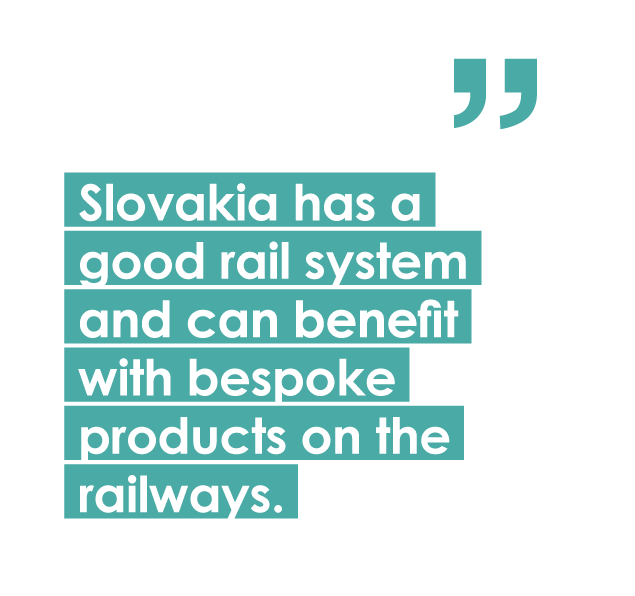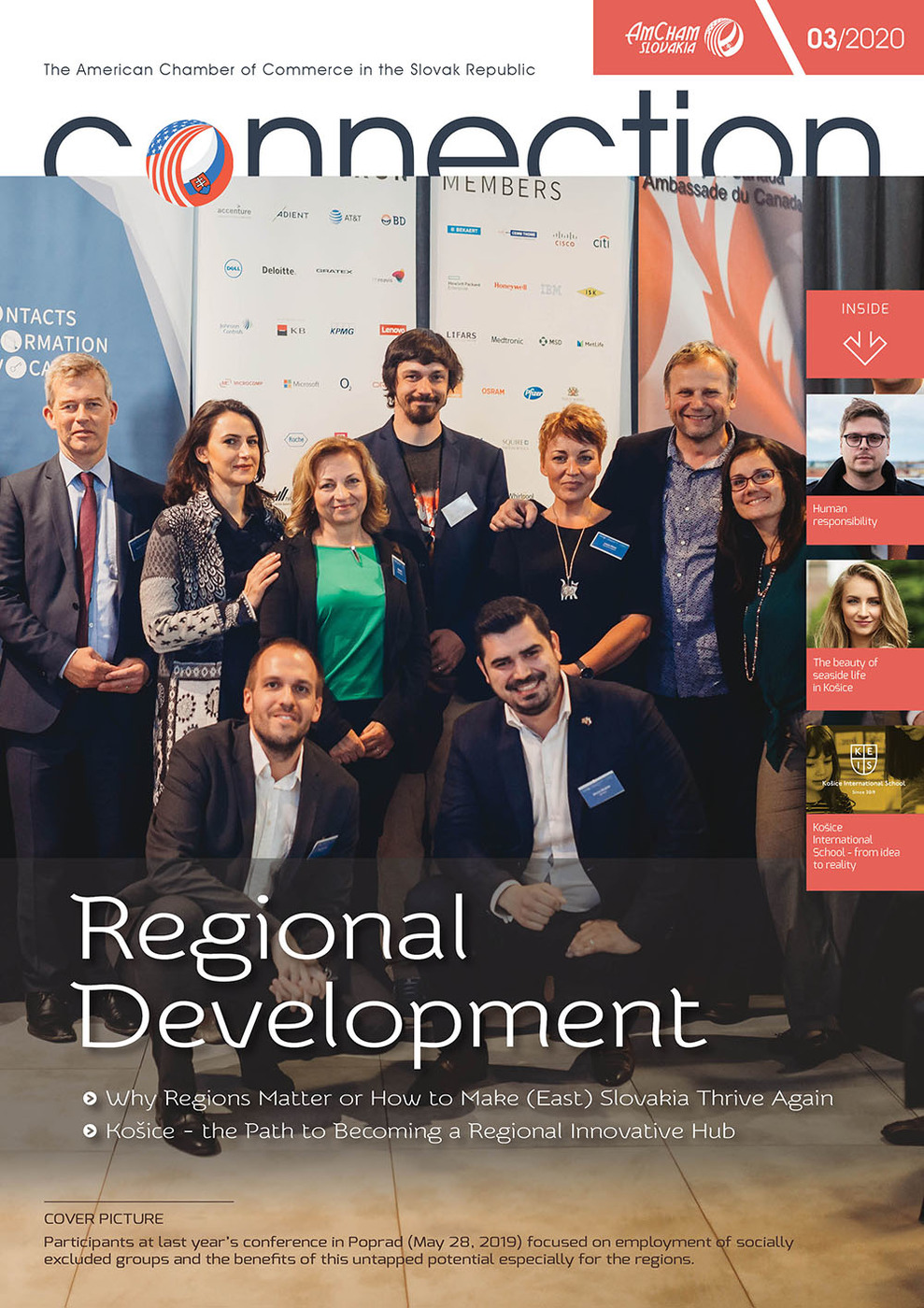What are the main characteristics of regional tourism in Slovakia?
I believe that the main thread running through regional tourism in Slovakia is the country’s natural and folkloric heritage. Slovakia is blessed with such great natural resources both above and below the ground that it really stands apart from other destinations in Europe. With 50 peaks over 2000m and some of the world’s most incredible cave complexes, active adventure, health and wellbeing is the pumping heart of why the regions make such a captivating holiday destination. Especially the Košice region is well known for the number of UNESCO heritage sites both cultural and natural that abound within a 2-hour radius of Košice. These are just some of the alluring reasons people visit Slovakia:
- Variety of nature in a very small area
- Variety of religions and minorities
- Short distances from one attraction to another
- Unesco heritage sites
- Countryside, views
- Culture, folklore
- Reasonable prices
- Rural areas
- Not overcrowded, a lot of undiscovered areas
In what ways does it differ from other countries in the region (Czech Republic, Hungary, Austria)?
In many ways Slovakia offers just an impressive array of tourism sites similar to its neighbors. Epic landscapes like Austria or the production of delicious wines like Hungary, or spas and beer like the Czech Republic - Slovakia competes in every way. It would seem that it might have a slight advantage in the fact that it still remains a little under the radar and as a result tourists can get more for their Euro. It is rare to find places in Europe which many people still don’t know much about. This is an asset. 
In my mind, compared to Hungary and Czech Republic our nature and mountains are more attractive: less discovered, with short distances from one attraction to the next, and with wide variety of nature in a very small area. Compared to Austria our advantage is a variety of culture, minorities and their religion, undiscovered areas, cheaper services and attractions.
What could help significantly improve Slovakia’s image as a tourist destination and attract visitors from abroad? Is it just about smarter marketing campaigns, or is it more complex?
The marketing mix and associated strategy plays an essential role in attracting new visitors and raising the popularity of a destination, but surely it is not the only factor. The fact that Slovakia remains under the radar may point to undersized investments in the tourism industry. It can also be linked to a lack of a good joined-up strategy shared by all the regions to highlight the key aspects to attract visitors. Instead of collaborating they compete with each other.
In my opinion the eastern part of Slovakia deserves investment in a major infrastructure expansion to create a strong hub. The infrastructure investment should be a critical part of the future strategy with an equitable split of the budget between all Slovakia’s regions. But it’s not only about the infrastructure within the country itself. The actual situation shows us how much we need to improve accessibility and infrastructure with long term solutions and flexibility to reflect the new situations. If we dream big, to have a national airline representing the country globally would make a huge change to tourism across Slovakia.
Košice is Slovakia’s second biggest city but it is located at the opposite end of the country from the capital. To what extent are these factors limiting when it comes to tourism?
Accessibility is the main topic when we want to raise the number of tourists. Sure, Bratislava has more flight connections with short distance to Vienna airport, therefore it has stronger incoming and MICE (meetings, incentives, conferences and exhibitions) tourism, moreover, it is common tourists choose capitals for their first visit of a country. But on the other hand, second cities often offer much more, because they have to work harder in promotion and development of their destinations, such as Košice. Košice is characteristic for cultural and urban tourism related to the rich history and architecture, together with a number of significant cultural, social, and sports events. It offers major cultural institutions and the city life boasts plentiful exhibitions, festivals and conferences. Cultural and university life with a young and creative community complete the character of the city. All this only supports the fact that, as the only city in Slovakia, Košice held the title of the European Capital of Culture in 2013 and belongs to the prestige UNESCO Creative Cities Network in the field of Media Arts.
Košice is characteristic for cultural and urban tourism related to the rich history and architecture, together with a number of significant cultural, social, and sports events. It offers major cultural institutions and the city life boasts plentiful exhibitions, festivals and conferences. Cultural and university life with a young and creative community complete the character of the city. All this only supports the fact that, as the only city in Slovakia, Košice held the title of the European Capital of Culture in 2013 and belongs to the prestige UNESCO Creative Cities Network in the field of Media Arts.
In my mind, what is important in comparison to the capital, even if the quality and availability of services becomes comparable – is the fact that life here is slower and enjoyable. Mainly during the summer, we often describe it as seaside life.
The tourism industry currently finds itself in a very difficult situation. The negative aspects of the post-Covid-19 reality are obvious and impossible to ignore. However, do you see any potential benefits that this situation could bring in the longer term?
There is always a silver lining in every dark cloud as far as the tourism sector is concerned. Although the negative aspects of post-Covid-19 reality are prevailing also in Košice and most of the tourism businesses are struggling with a big financial loss. However, Covid-19 crisis could also bring a new opportunity. It has required every organization and company to innovate and create another legacy and think more strategically about the future.
The good thing is that Slovakia as well as Košice confirmed the reputation of a safe country and city to visit. Moreover, like other European countries, we could benefit from those travellers not feeling like flying long haul and instead opting for short haul for at least two years. And travellers’ preferences can dramatically change if the era of cheap air travel is over. Consumer confidence is low, this is one way in which Slovakia could benefit. Covid-19 has highlighted our reliance on air and how we need to cut back. Slovakia has a good rail system and can benefit with bespoke products on the railways.  The crisis can also bring an opportunity to understand the need to improve quality, discover the potential and focus on the development of non-developed areas. Focusing on sustainable and eco-tourism, with the support of local agriculture, tradition, and products, can bring a new touristic offer and transformative tourism could become a new asset for our region. This journey is also supported by the efforts of the city of Košice to become the European Green Capital in 2023.
The crisis can also bring an opportunity to understand the need to improve quality, discover the potential and focus on the development of non-developed areas. Focusing on sustainable and eco-tourism, with the support of local agriculture, tradition, and products, can bring a new touristic offer and transformative tourism could become a new asset for our region. This journey is also supported by the efforts of the city of Košice to become the European Green Capital in 2023.
What would help boost regional tourism in Slovakia more - increased numbers of foreign visitors or more Slovaks who decide to spend their holidays in Slovakia on regular basis?
Regional tourism of course must be popular domestically before it can become popular internationally. Slovakia is on the right track - awareness and popularity are growing and recognition for the high Tatras region on Lonely Planet “Best in travel for 2019” helps induce international traffic. Due to the current situation, it is certain that Slovaks will travel more inside the country this year, and discover the undiscovered.
Therefore, the organization Visit Košice together with the organization Košice Region Tourism is focusing mainly on the domestic visitor. With a creative and massive campaign, we would like to break down the prejudices of Slovaks living in western Slovakia and show them that it is not that far to the city of Košice and the Košice region. Eastern Slovakia, even beyond the High Tatras, is really worth a visit and exploring for several days.
The replies were consulted with Ramy James Salameh, who cooperates with Visit Košice
Photos: Visit Košice archive



Follow us